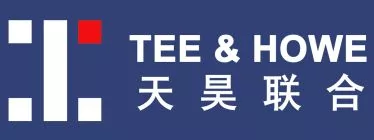While the first CN patent linkage declaration was reported in my post below, that was a non-contentious type 3 declaration, i.e. the generic drug applicant undertakes that they would only put their drug onto the market after the patents have expired.
https://www.linkedin.com/posts/tobymak_first-in-china-patent-linkage-notification-activity-6820520545168293888-sVr5
Thanks for heads-up from Indira TK, on 23 July 2021, the first contentious CN patent linkage declaration was announced, directed to the drug dapagliflozin (达格列净) 5 and 10 mg, with AstraZeneca as the drug marketing approval owner in China. The relevant screen shot for the 5mg drug is shown above, while that of the 10 mg drug has similar contents.
It is interesting to note that the generic drug applicant Jiangsu Hansoh Pharmaceutical Group Co., Ltd. (江苏豪森药业集团有限公司, Hansoh) filed a type 3 declaration against CN200910158686.6 directed to the chemical compound of the active pharmaceutical ingredient API dapagliflozin itself, i.e. Hansoh undertakes that they would only put their drug onto the market after CN200910158686.6 has expired on 15 May 2023 (CN200910158686.6 is a divisional from CN03811353.8).
On the other hand, Hansoh filed type 4.2 declarations against the following 3 CN patents, i.e. Hansoh declared that their generic drug does not fall within the scope of the following 3 CN patents that are directed to specific formulations and medical uses:
- CN200880016902.7 (full term expiry 21 March 2028) - specific formulation comprising the API in the form of dapagliflozin propylene glycol hydrate, microcrystalline cellulose, lactose, crospovidone, silicon dioxide, magnesium stearate, with each components presents in respective specific amounts (claim 8).
- CN200780024135.X (full term expiry 21 June 2027) - Medical use (Swiss-type claim) of dapagliflozin propylene glycol hydrate with specific crystalline structure (note: patents directed to crystalline structure of a drug per se should not be registered in the CN Orange Book) in treating diabetes, insulin resistance, hyperglycemia, hyperinsulinemia, elevated blood levels of fatty acids or glycerol, hyperlipidemia, dyslipidemia, obesity, hypertriglyceridemia, or diabetic complications (claim 9).
- CN201210201489.X (full term expiry 21 March 2028) - specific formulation comprising the API in the form of dapagliflozin propylene glycol hydrate with a specific dosage regime (claim 1), with further components including bulking agent, binder, disintegrant, and so on (claims 2 and 3), and the medical uses of such specific formulation (Swiss-type claims) for treating diabetes.
That is, Hansoh chose to challenge the patents directed to specific formulations comprising the API dapagliflozin propylene glycol hydrate, and the medical use of the crystalline API. Comparing with the chemical compound patent CN200910158686.6 (which Hanson chose to deal with with a type 3 declaration), there is higher chance to get around these formulation and medical use patents, for example by not using dapagliflozin propylene glycol hydrate, but uses dapagliflozin itself (whether this would be caught by equivalence is another question). In fact, Hanosh declared that the API in their generic drug is different from that in these 3 CN patents, i.e. dapagliflozin propylene glycol hydrate.
AstraZeneca has until 6 September 2021 (45 days from 23 July 2021) to file a complaint against Hansoh's type 4.2 declaration against the 3 CN patents above at the Beijing IP Court, or at the CNIPA. Failure to do so would result in that the drug marketing approval application would be processed as normal by the China National Medical Products Administration as usual, i.e. without any delay.
If AstraZeneca filed the complaint and was accepted (by the the Beijing IP Court, or the CNIPA), and a decision was made within 9 months from the date of acceptance of the complaint:
- if the decision was in favor of AstraZeneca, the drug marketing approval would be delayed to shortly before the expiry of the above three patents, i.e. maximum delay up to 2028.
- if the decision was not in favor of AstraZeneca or not with 9 months, the drug marketing approval would be processed as normal.
However, as Hanosh undertakes a type 3 declarations against CN200910158686.6, the earliest date that Hanosh could put their generic drug on the market in China is 15 May 2023.
Let's wait and see whether AstraZeneca would file a complaint by 6 September 2021, in which the biggest obstacles may be to get documents including Power of Attorney to be notarized and legalized......
The content of this article is intended to provide a general guide to the subject matter. Specialist advice should be sought about your specific circumstances.

